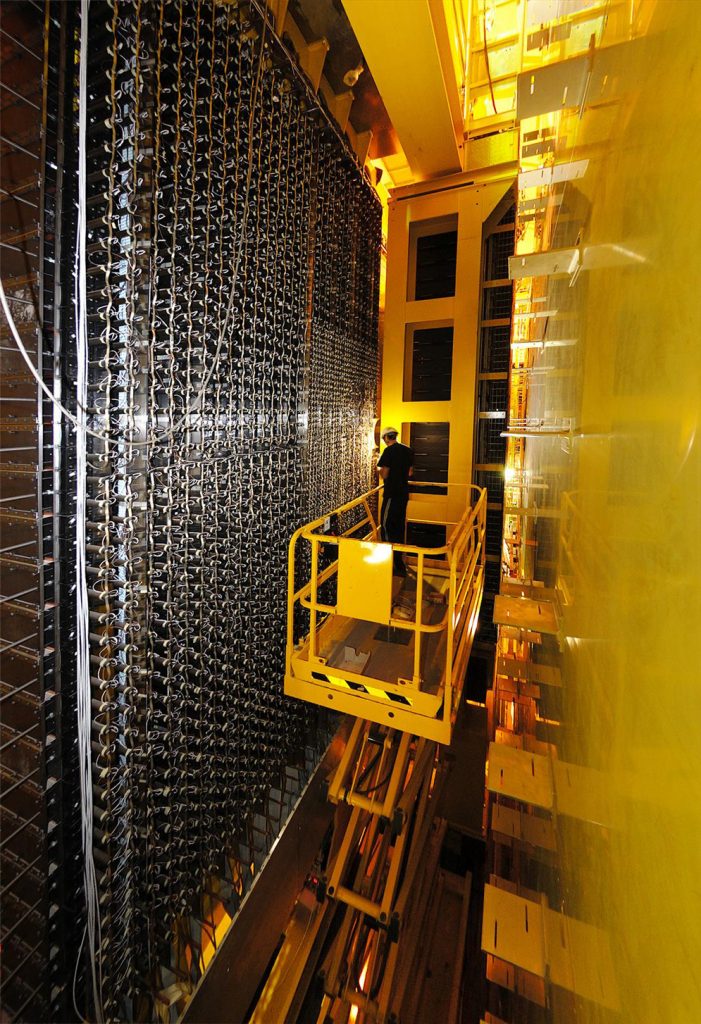The calorimeter system is designed to stop particles as they pass through the detector, measuring the amount of energy lost as each one grinds to a halt.
Two types of calorimeter are used at LHCb. The electromagnetic calorimeter is responsible for measuring the energy of lighter particles, such as electrons and photons, while the experiment’s hadron calorimeter samples the energy of protons, neutrons and other particles containing quarks.
Both calorimeters have a sandwich-like structure, with alternating layers of metal and plastic plates. When particles hit the metal plates, they produce showers of secondary particles. These, in turn, excite polystyrene molecules within the plastic plates, which emit ultraviolet light. The amount of UV produced is proportional to the energy of the particles entering the calorimeter.

Calorimeters provide the main way of identifying particles that possess no electrical charge, such as photons and neutrons.
